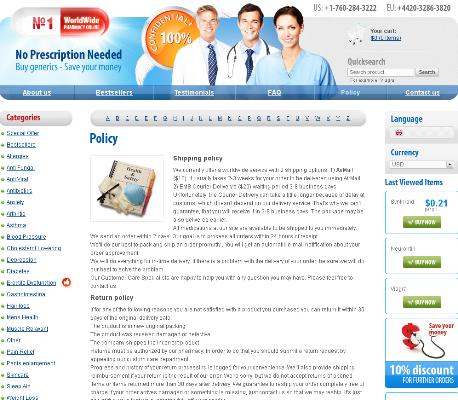| Royal City Drugs |
To Visit Online Pharmacy Click HERE ↓
Estradiol and Its Impact on Bone Density
Estradiol’s Role in Bone Remodeling and Strength
Imagine bone as a dynamic living tissue, constantly undergoing renewal through the balanced actions of bone-forming osteoblasts and bone-resorbing osteoclasts. At the heart of this intricate process is estradiol, a form of estrogen, which ensures bones stay dense and resilient. Estradiol doesn’t simply encourage new bone formation; it also suppresses the activity of osteoclasts, the cells responsible for breaking down old bone. This carefully regulated interplay maintains the strength and integrity of the skeleton throughout life.
As we age or experience hormonal changes, fluctuations in estradiol levels can disrupt this balance, tipping the scales toward bone loss. By promoting calcium absorption and slowing the bone remodeling cycle, estradiol acts as a vital protector against fragility. This hormone’s pivotal influence is clear in both health and disease states.
| Bone Cells | Estradiol’s Influence |
|---|---|
| Osteoblasts (Bone Formation) | Stimulates activity for new bone growth |
| Osteoclasts (Bone Breakdown) | Inhibits bone resorption, preserving density |
How Hormonal Fluctuations Influence Bone Mass

Throughout life, the body’s production of estradiol naturally ebbs and flows, creating direct consequences for bone health. During puberty, rising levels of estradiol support rapid bone development, laying the foundation for adult skeletal strength. In contrast, the sharp decline in estradiol during menopause accelerates bone loss, often leading to increased fragility.
These hormonal shifts don’t act alone—other factors, like age and overall health, can magnify their effects. Even temporary changes, such as those seen in certain medical treatments or pregnancy, can subtly influence bone density.
Ultimately, maintaining stable estradiol levels is crucial for preserving strong, resilient bones. With each fluctuation, the intricate balance between bone formation and breakdown is affected, underscoring why hormonal health is so tightly intertwined with skeletal integrity.
Estradiol Deficiency and the Risk of Osteoporosis
Estradiol plays a crucial role in preserving bone density throughout adulthood. When production of this hormone drops, bone loss can quickly outpace new bone formation. As a result, bones gradually lose their strength and structural integrity. This makes them more prone to fractures, particularly in the spine, hip, and wrist. Understanding how estradiol influences bone metabolism underscores why certain populations, such as postmenopausal women, face much greater challenges in maintaining strong, resilient skeletons as they age.
Gender Differences in Estradiol’s Effect on Bones

From adolescence onward, estradiol shapes bone health in both men and women, but its effects differ strikingly between the sexes. In females, estradiol levels surge during puberty, driving rapid gains in bone mass and supporting skeletal strength throughout reproductive years. As women approach menopause, the natural decline in estradiol accelerates bone resorption, leading to an increased risk of osteoporosis.
In contrast, males maintain a steadier, lower level of estradiol—mostly converted from testosterone. Even though these levels are less pronounced, they still play a crucial role in preserving bone density and preventing microarchitecture deterioration. Fascinatingly, research highlights that both insufficient and excessive estradiol can negatively impact bone health in men, underlining its importance across the gender spectrum for maintaining lifelong skeletal resilience.
Lifestyle Choices and Their Interaction with Estradiol
Daily habits play a pivotal role in determining how effectively estradiol protects bone health. Regular weight-bearing exercise, for instance, stimulates the body to maintain higher bone density and supports estradiol’s beneficial effects on bone remodeling. Likewise, a balanced diet rich in calcium and vitamin D not only strengthens bones directly, but also enhances estradiol’s action. Smoking and excessive alcohol, however, both reduce estradiol levels, raising the risk of bone loss.
For individuals navigating hormonal changes—like menopause or significant weight fluctuations—adapting lifestyle choices becomes even more crucial. Stress management, sleep quality, and personalized medical consultations can mitigate some hormonal impacts on bone mass. In this interplay, conscious daily decisions can amplify estradiol’s protective effect, underscoring the connection between healthy living and long-lasting bone strength.
| Lifestyle Factor | Effect on Estradiol & Bone Health |
|---|---|
| Weight-bearing Exercise | Enhances bone density, supports estradiol's effects |
| Diet (Calcium, Vitamin D) | Improves estradiol’s bone-protective actions |
| Smoking/Alcohol Overuse | Reduces estradiol, increases bone loss risk |
Emerging Therapies Targeting Estradiol Pathways
Researchers are pushing the boundaries of bone health treatment by developing novel drugs and biosimilars that modulate estradiol receptors more precisely than traditional hormone therapies. These innovative approaches aim to preserve bone mass without some of the adverse effects associated with systemic estrogen replacement. Selective estrogen receptor modulators (SERMs) and tissue-selective estrogen complexes are already showing promise, offering targeted benefits for bone strength while minimizing risks to other organs.
Additionally, gene-editing technologies and biologics are being investigated to enhance local estradiol activity in skeletal tissue. As these treatments advance, they may transform osteoporosis prevention strategies for at-risk populations. NIH: Estradiol and Bone Metabolism, Endocrine Society: Bone Health and Estradiol






Email Us
Fill out all the fields below and press submit, a rep will contact you as soon as possible.

